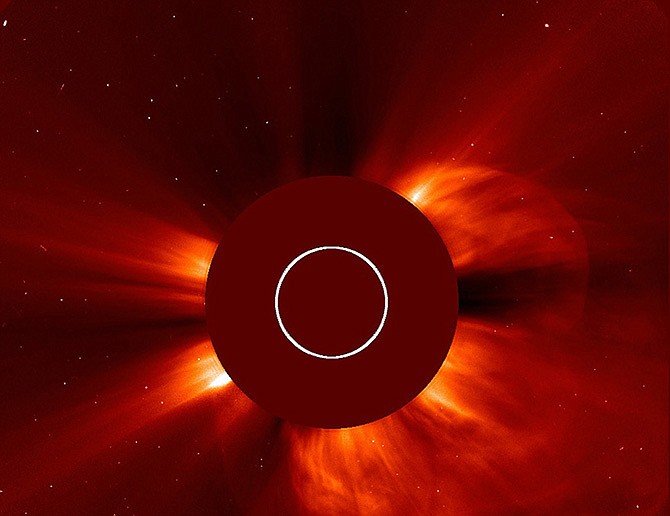CAPE CANAVERAL, Fla. (AP) - A strong solar storm is interfering with the latest grocery run to the International Space Station.
On the bright side, the orbiting lab has won a four-year extension, pushing its projected end-of-lifetime to at least 2024, a full decade from now.
"This is a big plus for us," said NASA's human exploration chief, Bill Gerstenmaier.
On Wednesday, Orbital Sciences Corp. delayed its space station delivery mission for the third time.
The company's unmanned rocket, the Antares, was set to blast off from Wallops Island, Va., with a capsule full of supplies and science experiments, including ants for an educational project. But several hours before Wednesday afternoon's planned flight, company officials took the unusual step of postponing the launch for fear solar radiation could doom the rocket.
Orbital Sciences' chief technical officer, Antonio Elias, said solar particles might interfere with electronics equipment in the rocket, and lead to a launch failure.
Although the solar storm barely rated moderate, some passenger jets were being diverted from the poles to avoid potential communication and health issues. GPS devices also were at risk.
But the six men aboard the space station were safe from the solar fallout, NASA said, and satellites also faced no threat. The Cygnus cargo ship aboard the rocket, for example, is built to withstand radiation from solar flare-ups.
The Cygnus was supposed to fly in December, but a breakdown in the space station's cooling system required repairs by spacewalking astronauts. The repair job, which was completed on Christmas Eve, bumped the supply mission to this week. Then frigid temperatures forced a launch delay from Tuesday to Wednesday. Then came the sun - at full force.
Frank Culbertson, an executive vice president for Virginia-based Orbital Sciences, said the delays can be frustrating, but he pointed out there's nothing wrong with the rocket itself.
"All we're really delaying is the success that's going to come when we execute this mission," he told reporters.
The solar flare peaked Tuesday afternoon, but more activity was expected, threatening a possible launch today. The sun is at the peak of a weak 11-year storm cycle.
Experts are evaluating just how much solar flaring the Antares can endure during liftoff. That will determine when the rocket will fly, Elias said.

